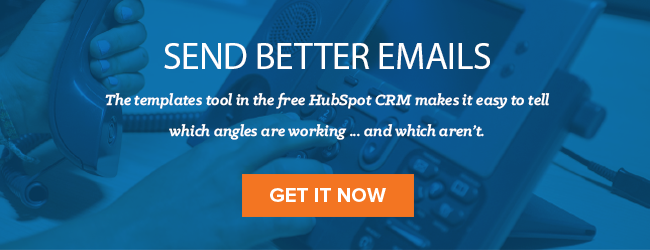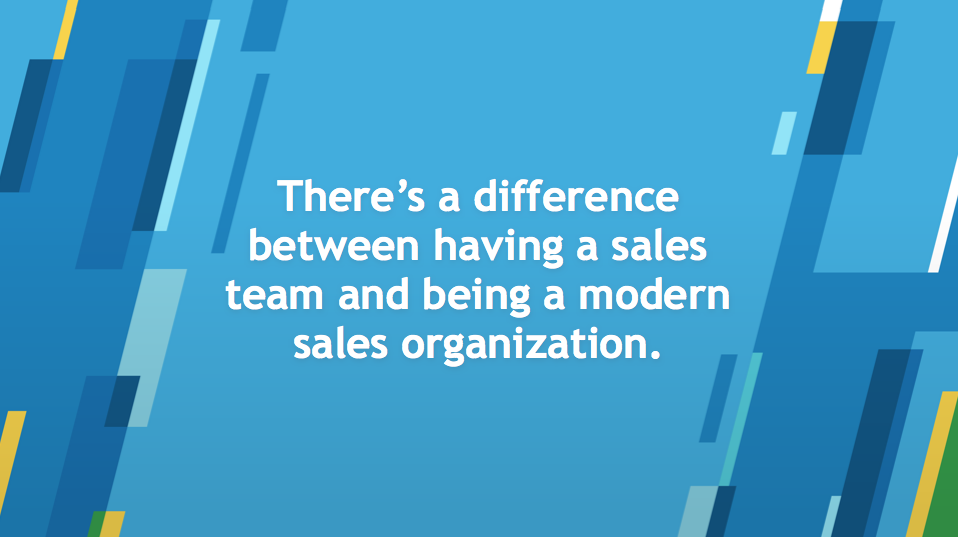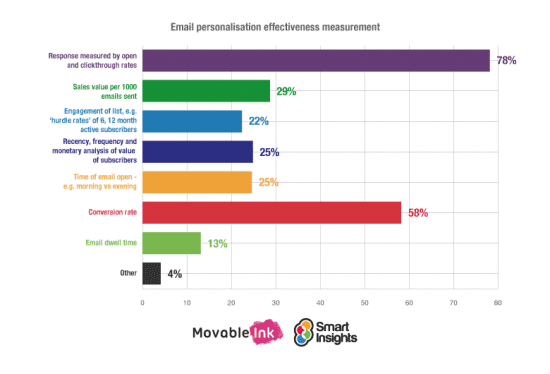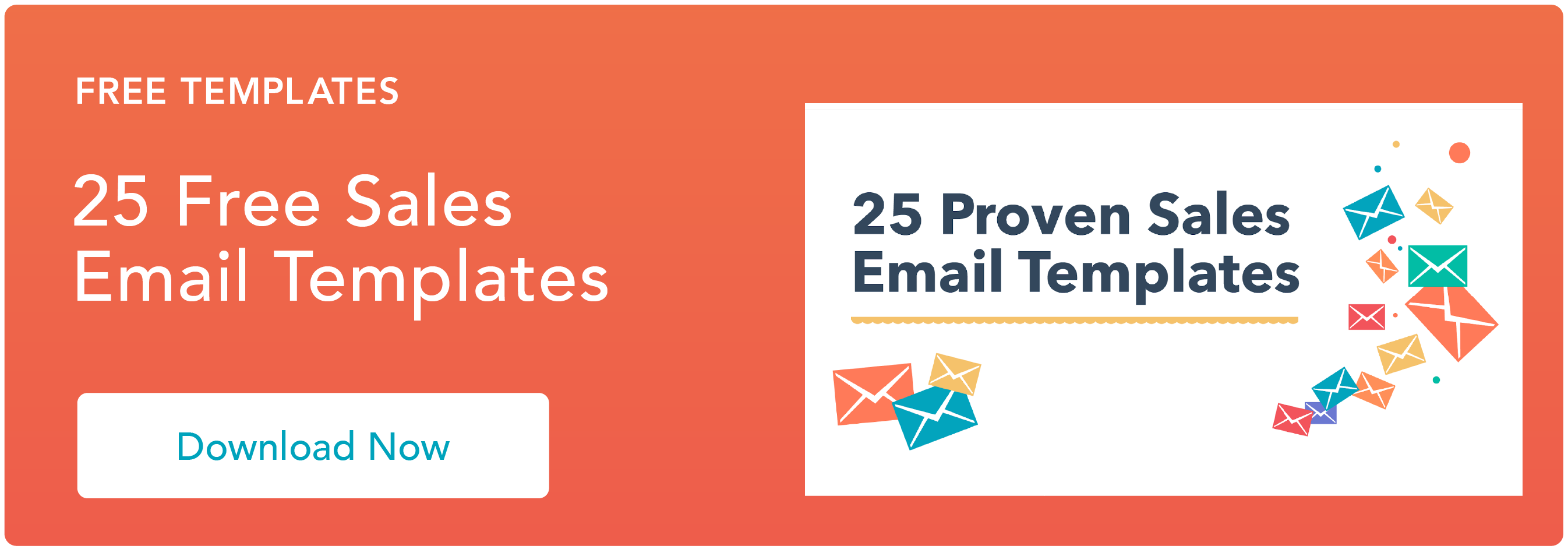In order of their release date, here are just some of the books being released in October that we're excited about.
 Artificial Intelligence: What Everyone Needs to Know by Jerry Kaplan, Oxford University Press
Artificial Intelligence: What Everyone Needs to Know by Jerry Kaplan, Oxford University Press
Over the coming decades, Artificial Intelligence will profoundly impact the way we live, work, wage war, play, seek a mate, educate our young, and care for our elderly.
It is likely to greatly increase our aggregate wealth, but it will also upend our labor markets, reshuffle our social order, and strain our private and public institutions. Eventually it may alter how we see our place in the universe, as machines pursue goals independent of their creators and outperform us in domains previously believed to be the sole dominion of humans. Whether we regard them as conscious or unwitting, revere them as a new form of life or dismiss them as mere clever appliances, is beside the point. They are likely to play an increasingly critical and intimate role in many aspects of our lives.
The emergence of systems capable of independent reasoning and action raises serious questions about just whose interests they are permitted to serve, and what limits our society should place on their creation and use. Deep ethical questions that have bedeviled philosophers for ages will suddenly arrive on the steps of our courthouses. Can a machine be held accountable for its actions? Should intelligent systems enjoy independent rights and responsibilities, or are they simple property? Who should be held responsible when a self-driving car kills a pedestrian? Can your personal robot hold your place in line, or be compelled to testify against you? If it turns out to be possible to upload your mind into a machine, is that still you? The answers may surprise you.
 Competing Against Luck: The Story of Innovation and Customer Choice by Clayton M. Christensen, Taddy Hall, Karen Dillon, and David S. Duncan, HarperBusiness
Competing Against Luck: The Story of Innovation and Customer Choice by Clayton M. Christensen, Taddy Hall, Karen Dillon, and David S. Duncan, HarperBusiness
The foremost authority on innovation and growth presents a path-breaking book every company needs to transform innovation from a game of chance to one in which they develop products and services customers not only want to buy, but are willing to pay premium prices for.
How do companies know how to grow? How can they create products that they are sure customers want to buy? Can innovation be more than a game of hit and miss? Harvard Business School professor Clayton Christensen has the answer. A generation ago, Christensen revolutionized business with his groundbreaking theory of disruptive innovation. Now, he goes further, offering powerful new insights.
After years of research, Christensen has come to one critical conclusion: our long held maxim—that understanding the customer is the crux of innovation—is wrong. Customers don’t buy products or services; they “hire” them to do a job. Understanding customers does not drive innovation success, he argues. Understanding customer jobs does. The “Jobs to Be Done” approach can be seen in some of the world’s most respected companies and fast-growing startups, including Amazon, Intuit, Uber, Airbnb, and Chobani yogurt, to name just a few. But this book is not about celebrating these successes—it’s about predicting new ones. Christensen contends that by understanding what causes customers to “hire” a product or service, any business can improve its innovation track record, creating products that customers not only want to hire, but that they’ll pay premium prices to bring into their lives. Jobs theory offers new hope for growth to companies frustrated by their hit and miss efforts.
This book carefully lays down Christensen’s provocative framework, providing a comprehensive explanation of the theory and why it is predictive, how to use it in the real world—and, most importantly, how not to squander the insights it provides.
 Messy: The Power of Disorder to Transform Our Lives by Tim Harford, Riverhead Books
Messy: The Power of Disorder to Transform Our Lives by Tim Harford, Riverhead Books
From the award-winning columnist and author of the national bestseller The Undercover Economist comes a provocative big idea book about the genuine benefits of being messy: at home, at work, in the classroom, and beyond.
Messy: The Power of Disorder to Transform Our Lives celebrates the benefits that messiness has in our lives: why it’s important, why we resist it, and why we should embrace it instead. Using research from neuroscience, psychology, social science, as well as captivating examples of real people doing extraordinary things, Tim Harford explains that the human qualities we value—creativity, responsiveness, resilience—are integral to the disorder, confusion, and disarray that produce them.
From the music studio of Brian Eno to the Lincoln Memorial with Martin Luther King, Jr., from the board room to the classroom, messiness lies at the core of how we innovate, how we achieve, how we reach each other—in short, how we succeed.
In Messy, you’ll learn about the unexpected connections between creativity and mess; understand why unexpected changes of plans, unfamiliar people, and unforeseen events can help generate new ideas and opportunities as they make you anxious and angry; and come to appreciate that the human inclination for tidiness—in our personal and professional lives, online, even in children’s play—can mask deep and debilitating fragility that keep us from innovation.
Stimulating and readable as it points exciting ways forward, Messy is an insightful exploration of the real advantages of mess in our lives.
 Rock Bottom to Rock Star: Lessons from the Business School of Hard Knocks by Ryan Blair, Portfolio
Rock Bottom to Rock Star: Lessons from the Business School of Hard Knocks by Ryan Blair, Portfolio
The New York Times bestselling author of Nothing to Lose, Everything to Gain shares the hard-won life lessons and counterintuitive advice they don’t teach you in business school.
If you’ve ever felt unsure of what to do with your life, Ryan Blair can relate. In his first book, Blair shared the brutally honest story of how he went from being an at-risk youth, sleeping on a mattress on the floor of a shack, to a self made multi-millionaire by his early twenties. As both the book and his story became a national sensation, Blair realized it was time to share a detailed road map on how you can reach financial freedom yourself.
Blair has battled extreme obstacles—growing fame, bad press, outrageous lawsuits, making and losing tens of millions of dollars (sometimes all in one day)—and still came out on top every time, and continued his mission to positively impact the lives of millions of people. Now he reveals how he did it; his personal formula for going from rock bottom to “rock star,” and being the absolute best at what you do.
If you’re serious about making the most of your life and you’re ready to become the “rock star next door,” instead of just looking up to them, this may be the most rewarding book you’ll ever read.
 The Analytical Marketer: How to Transform Your Marketing Organization by Adele Sweetwood, Harvard Business Review Press
The Analytical Marketer: How to Transform Your Marketing Organization by Adele Sweetwood, Harvard Business Review Press
Analytics are driving big changes, not only in what marketing departments do but in how they are organized, staffed, led, and run.
Leaders are grappling with issues that range from building an analytically driven marketing organization and determining the kinds of structure and talent that are needed to leading interactions with IT, finance, and sales and creating a unified view of the customer. The Analytical Marketer provides critical insight into the changing marketing organization—digital, agile, and analytical—and the tools for reinventing it.
Written by the head of global marketing for SAS, The Analytical Marketer is based on the author’s firsthand experience of transforming a marketing organization from “art” to “art and science.” Challenged and inspired by their company’s own analytics products, the SAS marketing team was forced to rethink itself in order to take advantage of the new capabilities that those tools offer the modern marketer. Key marketers and managers at SAS tell their stories alongside the author’s candid lessons learned as she led the marketing organization’s transformation. With additional examples from other leading companies, this book is a practical guide and set of best practices for creating a new marketing culture that thrives on and adds value through data and analytics.
 The Content Trap: A Strategist's Guide to Digital Change by Bharat Anand, Random House
The Content Trap: A Strategist's Guide to Digital Change by Bharat Anand, Random House
From Harvard Business School Professor of Strategy Bharat Anand comes an incisive new approach to one of the key questions of our time: how to thrive rather than be destroyed by digital transformation.
Companies everywhere face two major challenges today: “getting noticed” and “getting paid.” To answer these questions, Bharat Anand examines a range of businesses around the world, from Chinese internet giant Tencent to Scandinavian digital trailblazer Schibsted, from The New York Times to The Economist, and from talent management to the future of education. Drawing on these stories, and on the latest research in economics, strategy, and marketing, this refreshingly engaging book reveals important lessons, smashes celebrated myths, and reorients strategy.
Companies that flourish today are finding that the connections they foster are more important than the content they create. Success comes not from making the “best” content, but from recognizing how content enables customers’ connectivity; it comes not from protecting the value of content at all costs, but from unearthing related opportunities close by; and it comes not from mimicking competitors’ best practices, but from seeing choices as part of a connected whole.
Digital change means everyone today can reach and interact with others directly—we are all in the content business. But that comes with risks; risks that Bharat Anand teaches us how to recognize and navigate. Filled with conversations with key players and in-depth dispatches from the frontlines of digital change, The Content Trap is an essential new playbook for navigating the turbulent waters we find ourselves in today.
 Unsubscribe: How to Kill Email Anxiety, Avoid Distractions, and Get Real Work Done by Jocelyn K. Glei, PublicAffairs
Unsubscribe: How to Kill Email Anxiety, Avoid Distractions, and Get Real Work Done by Jocelyn K. Glei, PublicAffairs
A modern, no-nonsense guide to getting rid of email anxiety, reclaiming your productivity, and spending more time on the work that matters.
Let’s face it: Email is killing our productivity. The average person checks their email 11 times per hour, processes 122 messages a day, and spends 28 percent of their total workweek managing their inbox. What was once a powerful and essential tool for doing our daily work has become a near-constant source of frustration, anxiety, and distraction from our work.
In Unsubscribe, Jocelyn K. Glei will show you how to tame your inbox, reclaim your productivity, and rediscover your creativity with tips on how to:
- Break free from email addiction by understanding the psychology of reciprocity, completion bias, and the asker’s advantage.
- Learn how to email smarter, faster, and less by prioritizing based on what really matters—your goals, your agenda, your people.
- Master the art of crafting emails that get people to pay attention, take action, and like you as a human!
- Jumpstart your email messages with word-for-word scripts for everything from getting clients to pay you to negotiating fees to delivering criticism.
- Develop daily routines and boundaries that minimize your time on email and free up your energy for more meaningful work.
With illustrations, activities, and checklists, Unsubscribe makes learning how to become a zen master of email simple and—dare we say—fun. Are you ready to unsubscribe from inbox overwhelm?
 A Brief History of Entrepreneurship: The Pioneers, Profiteers, and Racketeers Who Shaped Our World by Joe Carlen, Columbia University Press
A Brief History of Entrepreneurship: The Pioneers, Profiteers, and Racketeers Who Shaped Our World by Joe Carlen, Columbia University Press
Through engaging vignettes, A Brief History of Entrepreneurship charts how the pursuit of profit by private individuals has been a prime mover in revolutionizing civilization. Entrepreneurs often butt up against processes, technologies, social conventions, and even laws. So, they circumvent, innovate, and violate to obtain what they want. This creative destruction has brought about overland and overseas trade, colonization, and a host of revolutionary technologies—from caffeinated beverages to the personal computer—that have transformed society.
Consulting rich archival sources, including some that have never before been translated, Carlen maps the course of human history through nine episodes in which entrepreneurship reshaped our world. In an engaging style highlighting the most colorful characters of each era, he discusses Mesopotamian merchants' creation of the urban market economy; Phoenician merchant-sailors intercontinental trade that came to connect Africa, Asia, and Europe; Chinese tea traders' invention of paper money; the colonization of the Americas; and the current "flattening" of the world's economic playing field. All of these are products of the entrepreneur's profit-driven quest. Yet the pursuit of profit hasn't always been positive. From slavery to organized crime, Carlen explores how entrepreneurship can sometimes work at the expense of others. Lastly, he discusses the new entrepreneurs who, through the nascent space tourism industry, are leading humanity to a multiplanetary future. By exploring all sides of this colorful and controversial legacy, Carlen brings much-needed detail to the role of entrepreneurship in shaping the course of history.
 The Only Sales Guide You'll Ever Need by Anthony Iannarino, Portfolio
The Only Sales Guide You'll Ever Need by Anthony Iannarino, Portfolio
The most user-friendly and comprehensive guide to sales success since THE SALES BIBLE, from the rising star sales blogger, lecturer, and consultant.
Why is it that a small number of salespeople are hugely successful, while the rest struggle to win deals? It’s not because they sell more popular products or have less demanding clients. It’s because these top producers have the right mindset and skills to continuously deliver for their companies and their clients.
Anthony Iannarino built a formidable career in sales from the ground up, then began blogging, consulting, and lecturing to help others understand how to be successful in sales. He gathered everything he’s learned about the discipline of sales—from the impact of social selling to how to fill your sales pipeline—and distilled it into an accessible and clear handbook for salespeople.
Sales performance, in Iannarino’s experience, can be broken down into 19 distinct strategies, including:
- Self-discipline: the most crucial element of sales success, and the most difficult. Create a discipline list of good daily practices that break down your ultimate goals into actionable steps, such as calling three prospective clients a day. Make your commitments public to hold yourself accountable.
- Business acumen: It’s no longer enough to know your product well; salespeople need to understand the general business landscape and common business terminology. Most importantly, your clients are businesspeople. Sell to them by proving that you can think like a businessperson as well.
- Closing: closing a sale isn’t just about the final commitment to buy. There are a series of smaller commitments required along the way. Make your prospective client commit to you by adding value through a deep understanding of their needs and a clear vision of their future.
Iannarino’s book is as useful for sales rookies who want to get their dream clients as it is for veterans who want to return to the basics to reach new heights. This is the definitive book on sales in the modern era.
 The Man Who Knew: The Life and Times of Alan Greenspan by Sebastian Mallaby, Penguin Press
The Man Who Knew: The Life and Times of Alan Greenspan by Sebastian Mallaby, Penguin Press
The definitive biography of the most important economic statesman of our time.
Sebastian Mallaby’s magisterial biography of Alan Greenspan, the product of over five years of research based on untrammeled access to his subject and his closest professional and personal intimates, brings into vivid focus the mysterious point where the government and the economy meet. To understand Greenspan’s story is to see the economic and political landscape of the last 30 years—and the presidency from Reagan to George W. Bush—in a whole new light. As the most influential economic statesman of his age, Greenspan spent a lifetime grappling with a momentous shift: the transformation of finance from the fixed and regulated system of the post-war era to the free-for-all of the past quarter century. The story of Greenspan is also the story of the making of modern finance, for good and for ill.
Greenspan’s life is a quintessential American success story: raised by a single mother in the Jewish émigré community of Washington Heights, he was a math prodigy who found a niche as a stats-crunching consultant teasing out patterns and trends from data sets. A master at explaining the economic weather to captains of industry, he translated that skill into advising Richard Nixon in his 1968 campaign. This led to a perch on the Council of Economic Advisers, from which the path to the Fed was relatively clear. A fire-breathing libertarian and disciple of Ayn Rand in his youth who once called the Fed’s creation a historic mistake, Mallaby shows how Greenspan governed as a pragmatist once in power. In his analysis, and in his core mission of keeping inflation in check, he was a maestro indeed, and hailed as such. At his retirement in 2006, he was lauded as the age’s necessary man, the veritable God in the machine, the global economy’s avatar. His memoirs sold for record sums to publishers around the world.
But then came 2008. Mallaby’s story lands with both feet on the great crash which did so much to damage Alan Greenspan’s reputation. Mallaby argues that the conventional wisdom is off base: Greenspan wasn’t a naïve ideologue who believed greater regulation was unnecessary. He had pressed for greater regulation of some key areas of finance over the years, and had gotten nowhere. He had grave doubts that government officials could assess risk any more wisely than private actors, and he failed to anticipate the magnitude of the danger, but to argue that he didn’t know is to miss the point. He knew more than almost anyone; the question is why he didn’t act, and whether anyone else could or would have. A close reading of Greenspan’s life provides fascinating answers to these questions, answers whose lessons we would do well to heed. Because perhaps Mallaby’s greatest lesson is that economic statesmanship, like political statesmanship, is the art of the possible. The Man Who Knew is a searching reckoning with what exactly comprised the art, and the possible, in the career of Alan Greenspan.
 Let Me Out: Unlock Your Creative Mind and Bring Your Ideas to Life by Peter Himmelman, TarcherPerigee
Let Me Out: Unlock Your Creative Mind and Bring Your Ideas to Life by Peter Himmelman, TarcherPerigee
A unique and inspiring guide to breaking free of fear and unlocking the mind’s potential in order to achieve personal and professional goals.
Award-winning musician turned communications expert Peter Himmelman’s lively, inspirational voice and unique techniques to harness fear and take the steps to make goals a reality will give readers the tools and confidence they need to stop listening to the negative thoughts holding them back and achieve success in their lives and careers.
Using science-based techniques plus methods designed to unlock creative potential (mined from his years as a successful musician) Himmelman shows readers how to open their minds and unite left AND right-brained thinking in order to take action through powerful and deceptively simple Brain Bottle Opener exercises that will enable them to:
- Create more fearlessly, whether it’s an ad campaign, a song, or a new business
- Communicate more effectively
- Finish projects that have stayed in the “bits and pieces” phase forever
- Make their ideas take shape in the real world
 A Capitalist's Lament: How Wall Street Is Fleecing You and Ruining America by Leland Faust, Skyhorse Publishing
A Capitalist's Lament: How Wall Street Is Fleecing You and Ruining America by Leland Faust, Skyhorse Publishing
Leland Faust unmasks Wall Street’s unsavory tactics in powerful detail by giving readers a high-level view of how the financial services industry misleads them, overcharges them, and exposes them to needless risk. He documents the financial industry’s alluring come-ons, airbrushed risks, high-stakes gambling, half-truths, misleading statements, outlandish predictions, tricks to overcharge customers, bad deals, and outright fraud by the most prominent and renowned of Wall Street’s players.
A Capitalist's Lament is about what happens when financial firms and their employees forget whose interest they are supposed to protect. It shows how making foolish or wrong predictions is of no consequence to those who make them and how Wall Street luminaries with poor track records still garner celebrity status. Most of all, it spotlights how Wall Street manipulates the system and furthers its own interests at its customers’ expense and puts us all at great risk. Here is what you need to know to protect yourself from “business as usual” and get ahead—instead of getting taken.
 The Human Way: The Ten Commandments for (Im)Perfect Leaders by Kelly Odell, LID Publishing
The Human Way: The Ten Commandments for (Im)Perfect Leaders by Kelly Odell, LID Publishing
In this counter-intuitive book for managers, the author argues that no one is perfect and that success as a leader is not about being perfect and always doing the right thing; it is about accepting your own humanity and adopting a number of down-to-earth attitudes and values. That's when we achieve true (adequate) success. Through ten commandments—starting with "Be humble-as a manager, you are also an employee"—management expert Kelly Odell provides a new perspective on how we should behave as managers in this age of differing cultures and values.
How we think about people, motivation, power and relationships is the foundation for successful management. Odell argues that too much emphasis is placed on the leader setting a good example and becoming a (heroic) role model, when in fact a leader whose priority is on other people is more likely to create value for their company and succeed as a manager.
 Earning It: Hard-Won Lessons from Trailblazing Women at the Top of the Business World by Joann S. Lublin, HarperBusiness
Earning It: Hard-Won Lessons from Trailblazing Women at the Top of the Business World by Joann S. Lublin, HarperBusiness
More than fifty trailblazing executive women who broke the corporate glass ceiling offer inspiring and surprising insights and lessons in this essential, in-the-trenches career guide from Joann S. Lublin, a Pulitzer-Prize winning journalist and management news editor for The Wall Street Journal.
Among the first female reporters at The Wall Street Journal, Joann S. Lublin faced a number of uphill battles in her career. She became deputy bureau chief of the Journal’s important London bureau, its first run by women. Now, she and dozens of other women who successfully navigated the corporate battlefield share valuable leadership lessons.
Lublin combines her fascinating story with tales from more than fifty women who reached the highest rungs of the corporate ladder—most of whom became chief executives—in industries as diverse as retailing, manufacturing, finance, high technology, publishing, advertising, automobiles, and pharmaceuticals. Leaders like Carly Fiorina, former CEO of Hewlett-Packard, as well as Mary Barra, CEO of General Motors, and Brenda Barnes, former CEO of Sara Lee, were the first women to run their huge employer. Earning It reveals obstacles such women faced as they fought to make their mark, choices they made, and battles they won—and lost.
Lublin chronicles the major milestones and dilemmas of the work world unique to women, providing candid advice and practical inspiration for women of all ages and at all stages of their career. The extraordinary women we meet in the pages of Earning It and the hard-won lessons they share provide a compelling career compass that will help all women reach their highest potential—without losing a meaningful personal life.
 The Attention Merchants: The Epic Scramble to Get Inside Our Heads by Tim Wu, Knopf
The Attention Merchants: The Epic Scramble to Get Inside Our Heads by Tim Wu, Knopf
From Tim Wu, author of the award-winning The Master Switch and who coined the phrase “net neutrality”—a revelatory look at the rise of “attention harvesting,” and its transformative effect on our society and our selves.
Attention merchant: an industrial-scale harvester of human attention. A firm whose business model is the mass capture of attention for resale to advertisers.
In nearly every moment of our waking lives, we face a barrage of advertising enticements, branding efforts, sponsored social media, commercials and other efforts to harvest our attention. Over the last century, few times or spaces have remained uncultivated by the “attention merchants,” contributing to the distracted, unfocused tenor of our times. Tim Wu argues that this is not simply the byproduct of recent inventions but the end result of more than a century’s growth and expansion in the industries that feed on human attention. From the pre-Madison Avenue birth of advertising to TV’s golden age to our present age of radically individualized choices, the business model of “attention merchants” has always been the same. He describes the revolts that have risen against these relentless attempts to influence our consumption, from the remote control to FDA regulations to Apple’s ad-blocking OS. But he makes clear that attention merchants grow ever-new heads, and their means of harvesting our attention have given rise to the defining industries of our time, changing our nature—cognitive, social, and otherwise—in ways unimaginable even a generation ago.
 People First Leadership: How the Best Leaders Use Culture and Emotion to Drive Unprecedented Results by Eduardo P. Braun, McGraw-Hill
People First Leadership: How the Best Leaders Use Culture and Emotion to Drive Unprecedented Results by Eduardo P. Braun, McGraw-Hill
The book that redefines leadership for our time—inspired by personal interviews with Jack Welch, Bill Clinton, George Lucas, Madeleine Albright, Pope Francis, and others.
In this life-changing book, former Director of the World Business Forum, Eduardo Braun, introduces a new vision of leadership—someone who puts people, cultures, and emotions first. Through thousands of hours of conversations with world-class leaders, Braun has identified 5 Key Roles any person can adopt to not only fire people up for success, but change the world for good, thus becoming a true leader.
With this refreshingly human approach, readers will find it easy to integrate the 5 traits into their roles as leaders. They’ll hear intimate stories and practical life lessons from CEOs like Jack Welch and Tony Hsieh, who trusted their instincts, followed their passions, and shared their visions with others. Best of all, they’ll learn how to make stronger connections that get better results—and discover a truer, deeper meaning of success.
Braun shares insights and anecdotes from his famous encounters with world leaders in business, politics, charity, and the arts, and a new leadership model for the 21st century: socially aware, culturally sensitive, emotionally intelligent, and successful. Everyone can learn to the importance that emotion plays in being an impactful leader.






 Unfortunately, when it comes to “having a sales team,” sales gets a bad rap. Many conventional sellers have left a bad impression on the sales industry, and covering that impression has been like painting over permanent marker. If you’ve screened a sales call in the last 24 hours, then you know what I’m talking about here.
Unfortunately, when it comes to “having a sales team,” sales gets a bad rap. Many conventional sellers have left a bad impression on the sales industry, and covering that impression has been like painting over permanent marker. If you’ve screened a sales call in the last 24 hours, then you know what I’m talking about here.




 Artificial Intelligence: What Everyone Needs to Know
Artificial Intelligence: What Everyone Needs to Know






 The Only Sales Guide You'll Ever Need
The Only Sales Guide You'll Ever Need

 A Capitalist's Lament: How Wall Street Is Fleecing You and Ruining America
A Capitalist's Lament: How Wall Street Is Fleecing You and Ruining America
 Earning It: Hard-Won Lessons from Trailblazing Women at the Top of the Business World
Earning It: Hard-Won Lessons from Trailblazing Women at the Top of the Business World





![Download Now: 25 Sales Email Templates [Free Access]](https://no-cache.hubspot.com/cta/default/53/be67aa79-8dbe-4938-8256-fdf195247a9c.png)






 You don’t have to go far to see this in action. Visit a local grocery store and look for customers taking samples of free cheese.
You don’t have to go far to see this in action. Visit a local grocery store and look for customers taking samples of free cheese.





